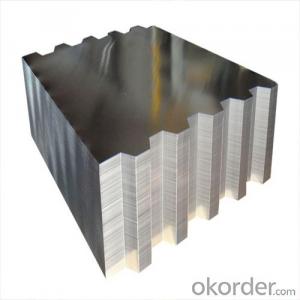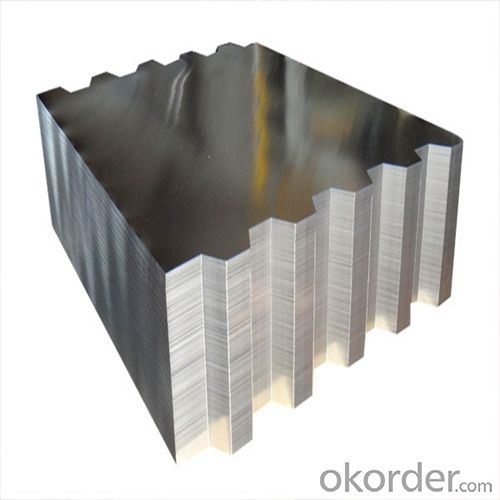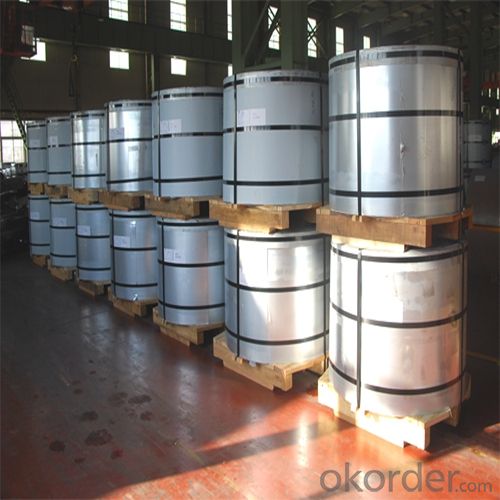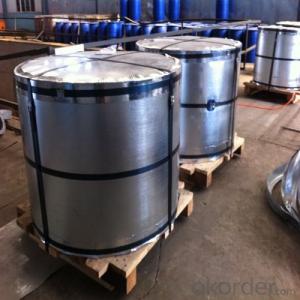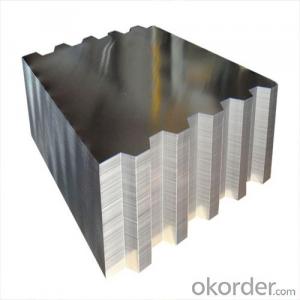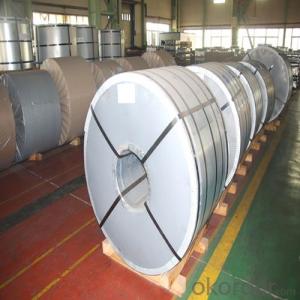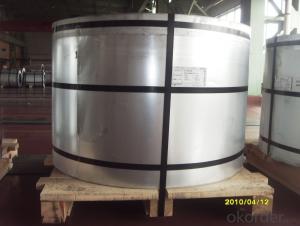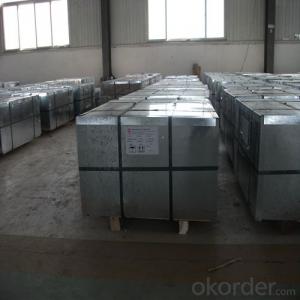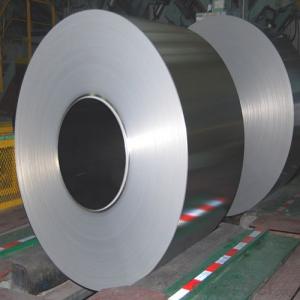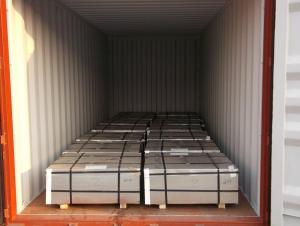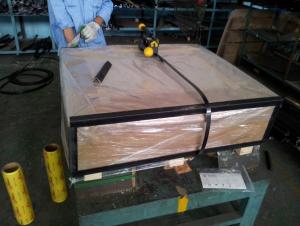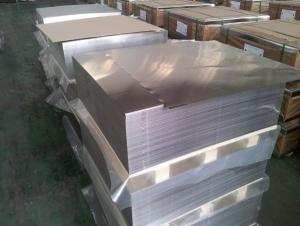Electrolytic Tinplate Coils or Sheets of Prime Quality for Chemical Use 0.17mm Thickness
- Loading Port:
- Qingdao
- Payment Terms:
- TT OR LC
- Min Order Qty:
- 25 m.t.
- Supply Capability:
- 30000 m.t./month
OKorder Service Pledge
OKorder Financial Service
You Might Also Like
1.Structure of Electrolytic Tinplate Coils or Sheets of Prime Quality for Chemical Use 0.17mm Thickness Description
Tinning is the process of thinly coating sheets of wrought iron or steel with tin, and the resulting product is known as tinplate. It is most often used to prevent rust.
2.Main Features of the Electrolytic Tinplate Coils or Sheets of Prime Quality for Chemical Use 0.17mm Thickness
Appearance – Tinplate is characterized by its beautiful metallic luster. Products with various kinds of surface roughness are produced by selecting the surface finish of the substrate steel sheet.
Paintability and printability – Tinplates have excellent paintability and printability. Printing is beautifully finished using various lacquers and inks.
Formability and strength – Tinplates have got very good formability and strength. By selecting a proper temper grade, appropriate formability is obtained for different applications as well as the required strength after forming.
Corrosion resistance – Tinplate has got good corrosion resistance. By selecting a proper coating weight, appropriate corrosion resistance is obtained against container contents. Coated items should meet 24 hour 5 % salt spray requirement.
Solderability and weldability – Tinplates can be joined both by soldering or welding. These properties of tinplate are used for making various types of cans.
Hygienic – Tin coating provides good and non toxic barrier properties to protect food products from impurities, bacteria, moisture, light and odours.
Safe – Tinplate being low weight and high strength makes food cans easy to ship and transport.
Eco friendly – Tinplate offers 100 % recyclability.
Tin is not good for low temperature applications since it changes structure and loses adhesion when exposed to temperatures below – 40 deg C.
3.Electrolytic Tinplate Coils or Sheets of Prime Quality for Chemical Use 0.17mm Thickness Images
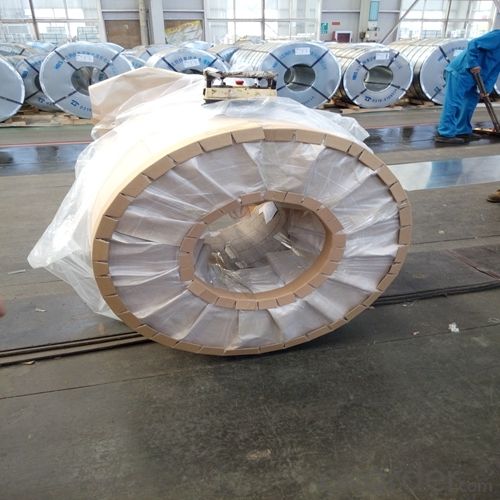
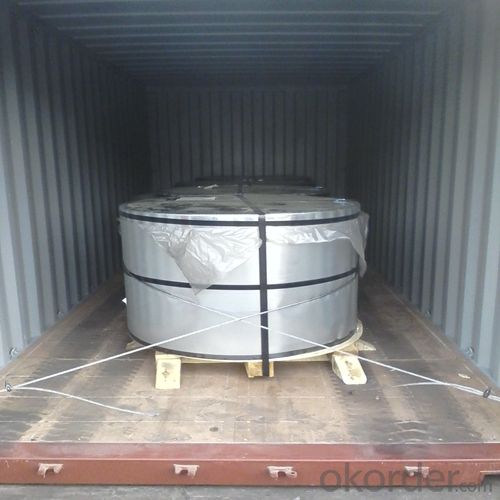
4.Electrolytic Tinplate Coils or Sheets of Prime Quality for Chemical Use 0.17mm Thickness Specification
Standard: ISO 11949 -1995, GB/T2520-2000,JIS G3303,ASTM A623, BS EN 10202
Material: MR
Thickness:0.17mm
Width: 600mm
Temper: T3
Annealing: BA
Coil Inner Diameter: 508mm
Weight: 6-10 tons/coil 1~1.7 tons/sheets bundle
Passivation:311
Oil: DOS
Surface: Finish
5.FAQ of Electrolytic Tinplate Coils or Sheets of Prime Quality for Chemical Use 0.17mm Thickness
- How are the tinplates specified?
The tinplates are specified as per the steel base, extent of tempering, the coating weight, annealing method and the surface finish.
- How many types there are for base steels?
The base steels are of three types: Type MR, L, D
- Q: What are the common printing techniques for tinplate?
- The common printing techniques for tinplate include lithography, offset printing, and silk-screen printing.
- Q: How does tinplate compare to other packaging materials in terms of cost?
- Tinplate is generally considered to be more expensive than other packaging materials such as aluminum or plastic. However, its durability, protective qualities, and recyclability make it a cost-effective choice in certain industries where the preservation of product quality is crucial, like food and beverages.
- Q: Can tinplate be used for promotional and gift items?
- Yes, tinplate can be used for promotional and gift items. Tinplate is a versatile material that can be easily decorated and customized, making it an ideal choice for creating unique and eye-catching promotional and gift items. Its durability and ability to retain its shape and design over time also make it a popular option for such purposes.
- Q: How is tinplate coated for household appliances?
- Tinplate is coated for household appliances through a process called electrolytic tinning. In this method, a thin layer of tin is deposited onto the surface of the steel plate through an electrolyte bath. The steel plate acts as the cathode, while the tin serves as the anode. The application of an electric current causes tin ions to migrate and bond with the steel, resulting in a durable and corrosion-resistant coating. This tin coating not only enhances the aesthetics of household appliances but also provides protection against rust and improves their overall lifespan.
- Q: What is the average lifespan of tinplate packaging?
- The average lifespan of tinplate packaging varies depending on various factors such as storage conditions, handling, and usage. However, when properly maintained, tinplate packaging can last for several years, providing durable protection for the packaged goods.
- Q: Can tinplate be painted?
- Yes, tinplate can be painted.
- Q: How is tinplate coated for stationery and office supplies?
- Tinplate is typically coated for stationery and office supplies through a process called electrolytic tinplating, where a thin layer of tin is electroplated onto the surface of the steel. This coating provides protection against corrosion and enhances the aesthetic appeal of the product.
- Q: Can tinplate be used for packaging chemicals?
- Yes, tinplate can be used for packaging chemicals. Tinplate is known for its excellent corrosion resistance, making it suitable for storing and transporting various chemicals safely. Additionally, its durability and ability to withstand high temperatures make it a reliable choice for chemical packaging applications.
- Q: What are the benefits of using tinplate for roofing?
- Tinplate offers several advantages for roofing, including its durability, resistance to corrosion, ease of installation, and aesthetic appeal. It is a long-lasting material that can withstand harsh weather conditions and is less prone to damage from elements like hail or wind. Additionally, tinplate is highly resistant to rust and can maintain its structural integrity over time. Its lightweight nature makes it easier to handle and install, reducing labor and transportation costs. Lastly, tinplate roofing can enhance the overall appearance of a building, as it can be painted or coated to match various architectural styles.
- Q: How is tinplate made?
- Tinplate is made by coating thin sheets of steel with a layer of tin through a process called electroplating. The steel sheets are first cleaned and prepared, then immersed in an electrolyte bath containing tin salts. When an electric current is passed through the bath, tin ions are attracted to the steel, forming a thin layer of tin on the surface. This tin coating enhances the steel's resistance to corrosion and provides a shiny and attractive finish.
Send your message to us
Electrolytic Tinplate Coils or Sheets of Prime Quality for Chemical Use 0.17mm Thickness
- Loading Port:
- Qingdao
- Payment Terms:
- TT OR LC
- Min Order Qty:
- 25 m.t.
- Supply Capability:
- 30000 m.t./month
OKorder Service Pledge
OKorder Financial Service
Similar products
Hot products
Hot Searches
Related keywords
